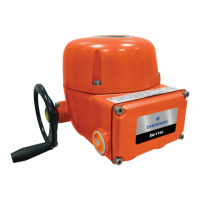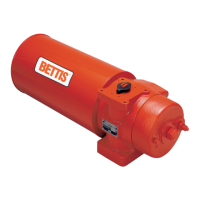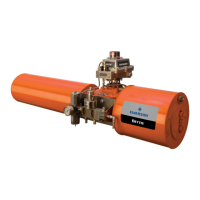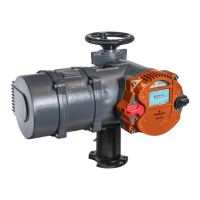7
Installation and Maintenance Instructions
MAN-02-04-99-0712-EN Rev. 1
February 2020
Machine Description
Section 2: Machine Description
Section 2: Machine Description
2.1 General
The SCE300 is an electric quarter-turn actuator suitable for operating a valve in a 90° stroke.
2.2 Principle of Operation
The electric motor drives the input to an epicyclical gear train via a spur reduction.
The input member of the epicyclical gear train carries two compound planet gears which
meshes with one internally toothed gear: the xed annulus. The xed annulus gear has
external helical teeth that mesh with a transversely-xed worm gear. Since the annulus
cannot drive the worm gear, this provides a xing point for the annulus; and since the
worm gear can drive the annulus, a means of manual operation is provided that requires
no declutch.
An end-of-travel-position detection device is operated via a position sensor directly linked
to the output shaft. The valve position is continuously monitored in electric and manual
mode by means of a position sensor directly connected to the SCE300 output drive.
2.3 Electrical Operation
— Control command 'open': counter-clockwise or clockwise rotation
(selectable on the logic board) moves the valve to a fully or partially
open position.
— Control command 'closed' : clockwise or counter-clockwise rotation
(selectable on the logic board) moves the valve to a fully or partially
closed position.
— Control system details are shown in the specic wiring diagram.
NOTICE
Standard rotation to close a quarter turn valve is the clockwise direction. The actuator
handwheel rotation is the same as the output shaft rotation; i.e. CWin = CWout. Adhesive
labels are included with the standard package for clockwise and counter-clockwise direction.

